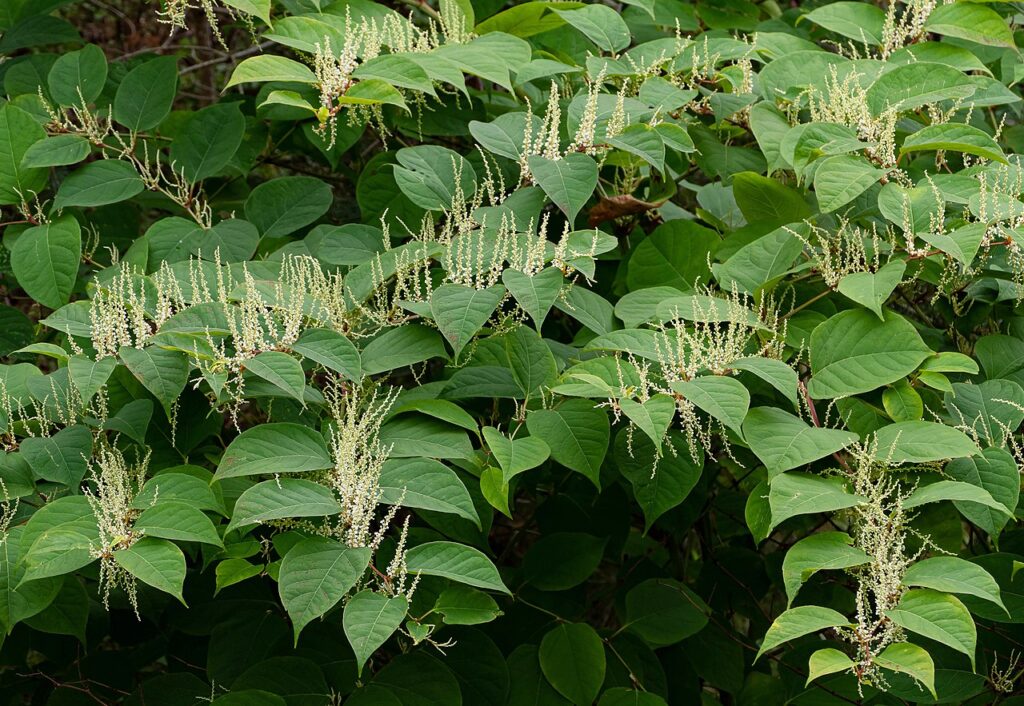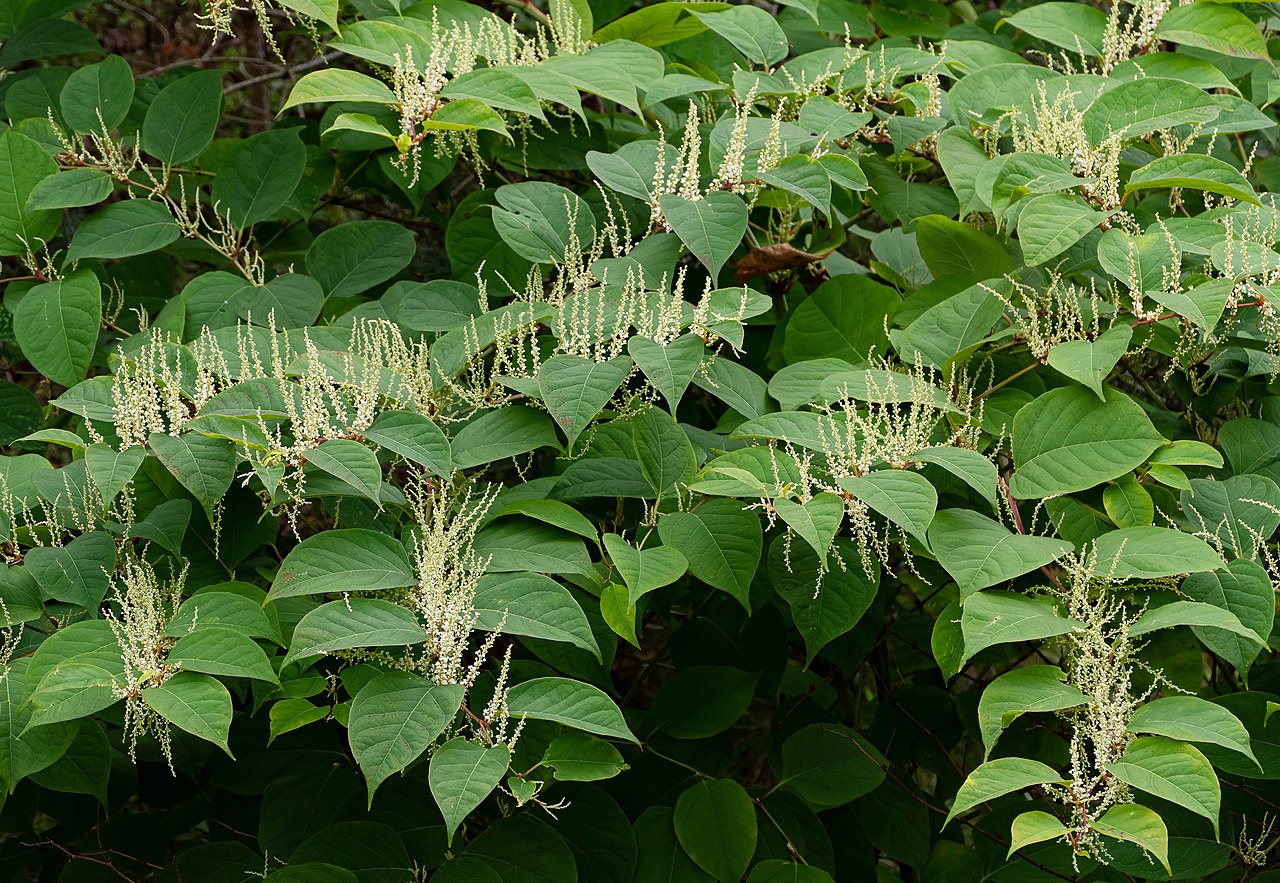Characteristics, Effects, and Controls
The Japanese Knotweed invasive species, scientifically known as Fallopia japonica, is an Asian plant with a reputable ethnobotanical value among the Japanese. However, outside Asia, F. japonica is an invasive plant that ranks among the 100 worst invasive species as per IUCN. Bashtanova et al. describe the plant as a perennial rhizomatous herb originating from Asia [1]. The plant is tall, herbaceous, and develops into woody rhizomes upon maturity [2].

The famous invasive alien species is common in Europe (particularly in the UK), North America, and Australia. The species is known to have an ability to tolerate and thrive across multiple ranges of soil, which, coupled with the plant’s ability to thrive with only one centimeter of root [3], explain the reason it can be located at such places as river banks and most human-made structures.
The plant poses a significant threat to flora, infrastructures, and agricultural land. Due to the fear that the plant tampers with the structural integrity of buildings, this weed has made people cautious when applying for mortgages. This article explains the various characteristics and the environmental issues associated with Knotweed and control measures.
Soil Types
One of the unique characteristics of knotweed, as already said, is its ability to thrive in multiple soil types. This plant species has an ability to propagate itself generatively by intra- and interspecific hybridization, which, as Bashtanova and colleagues note, makes it challenging to eradicate the plant. The plant can also propagate vegetatively from shoots and tiny rhizome pieces, adding to eliminating it, as Bashtanova et al. state. In its native habitat, Knotweed has two reproduction methods: by seed and by rhizome extension [1]. Once Japanese knotweed stems establishes a stand, its growth spreads faster and further due to clonal connectivity [3].
Economic Damage
Like alien invasive species, Japanese Knotweed poses a host of problems that add to significant environmental and economic impact. This species causes significant changes to the communities and ecosystems it inhabits, including visual, structural, and chemical transformations of ecosystems, resulting from its large and clonal monocultural growth [3].
Research by Fuchs et al. explains how the species causes a severe competition for nutrients with crops and leads to landfills from contaminated goods such as hummus. The growth of Japanese knotweed leaves also forms a dense canopy that has been described as a significant restriction to the growth of existing vegetation. Besides, notes Bashtanova et al., the rhizomes of this invasive species release various secondary products that have allelochemical properties, a threat to the availability of mineral nutrients needed for the growth of native plants. Also, the competition posed by the species destroys floral diversity.
Threatening Our Cities
Japanese knotweed is also a significant threat to the integrity of human-made structures. This plant’s shoots have the ability to push through asphalt, and when this happens, the result is the destruction of structures such as pavements and car parks [1]. As Bashtanova and colleagues further note, the penetrating of rhizomes of F. japonica through foundations walls, land drainage works, and flood defense structures damages the structures, the result of which has been recurring renovation expenses.
In the U.K., for instance, F. japonica has led to the emergence of the “seven-meter rule” where people refuse mortgage applications for buildings within seven meters above the plant’s ground portions. As a result, sellers have incurred expenses in terms of reduced property value and providing evidence of treatment programs that mortgage lenders often demand [2, 4].
This is all because of the feared impact of Japanese knotweed on the structural integrity of the buildings. However, claims about the seriousness of the risk regarding structural integrity have been disputed for what ecologists term as lack of evidence that the weed causes significant structural damage [4]. As a result, states the University of Leeds, “Automatically refusing mortgages on properties where Japanese knotweed is found is out of proportion to the risk posed by this invasive species.”
Controlling JAPANESE Knotweed
The control of knotweed can be done biologically, chemically, or mechanically. Biological control entails the use of pests and pathogens for whom the plant is a target, among them the psyllid, leaf beetle, and snails [1, 3]. Mechanically, the weed can be eradicated by cutting and mowing it, a promising solution, especially for conservation areas, as Bashtanova et al. state.
Large-scale excavation coupled with the use of chemicals makes a suitable solution for construction sites [1]. However, each of these methods has a downside. Cutting and mowing of the plant, for instance, have proved to be inefficient and even encourage the further spread of the weed. Excavation and use of chemicals suffer a setback of massive costs. The use of root barrier membranes becomes challenging, given the difficulty of sealing soil containing rhizomes and shoots against penetration by pipes, ducts, or building foundations as construction takes place [1].
Statistics show that the U.K. alone has incurred £1.56 billion in an attempt to eradicate the weed, while Washington, from 2004 to 2009, spent $4.3 million in its Knotweed Control Program [1]. These challenges add to the difficulty of completely eradicating the weed, as mentioned earlier. However, increased cooperation among parties, early interventions, and a combination of control methods can help eliminate and retard the spread of the Japanese knotweed.
References
1. Bashtanova, Uliana B., K. Paul Beckett, and Timothy J. Flowers. “Physiological approaches to the improvement of chemical control of Japanese knotweed (Fallopia japonica).” Weed Science 57, no. 6 (2009): 584-592. Accessed on https://www.jstor.org/stable/40586877?seq=1#page_scan_tab_contents
2. Fennell, Mark, Max Wade, and Karen L. Bacon. “Japanese knotweed (Fallopia japonica): an analysis of capacity to cause structural damage (compared to other plants) and typical rhizome extension.” PeerJ 6 (2018): e5246. Accessed on https://www.ncbi.nlm.nih.gov/pmc/articles/PMC6064201/
3. Fuchs, Anneliese, Christina Pichler-Koban, Wilfried Elmenreich, and Michael Jungmeier. “Game of Clones: Students Model the Dispersal and Fighting of Japanese Knotweed (Fallopia japonica).” In Invasive Species. IntechOpen, 2019. Accessed on https://www.intechopen.com/online-first/game-of-clones-students-model-the-dispersal-and-fighting-of-japanese-knotweed-fallopia-japonica-
4. University of Leeds. “Japanese knotweed—not such a knotty problem?” 2019. Accessed from https://phys.org/news/2018-07-japanese-knotweednot-knotty-problem.html

